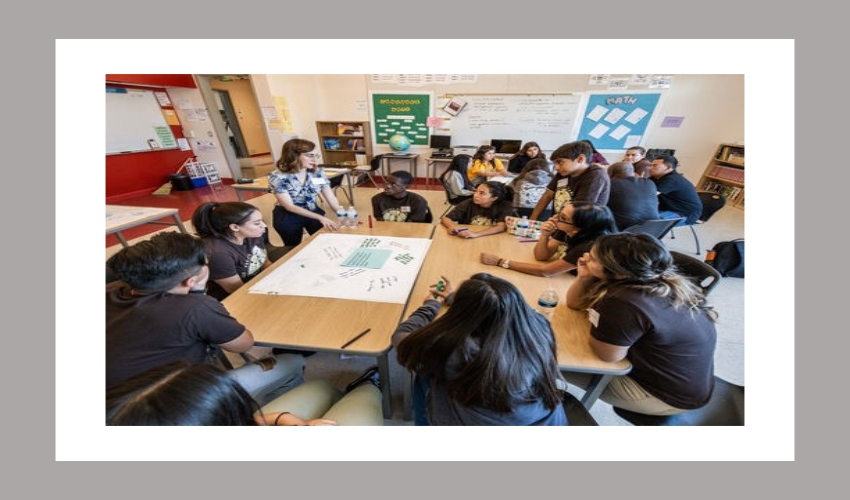Engaging Students in Classroom Discussions: Strategies to Address Fear of Failure
Student engagement is considered a crucial aspect of a high-functioning classroom. Students should be actively involved in interactions with the teacher, the content being taught, and, most importantly, with each other. However, it is concerning to note that student-to-student engagement is often lacking in classrooms, despite the well-documented benefits of communication and collaboration among students (Johnson, 2018). As a renowned educational researcher, John Hattie’s work has shown that discussions among students can significantly impact student achievement (Hattie,2009). Hence, it is imperative to address the underlying issue that inhibits students from engaging in meaningful discussions with their peers.
Upon further investigation, it becomes apparent that fear is a significant barrier to student-to-student engagement. It is not uncommon for teachers to feel apprehensive about relinquishing control, being met with awkward silence after posing a question, or students failing to participate. However, as educators, we must recognize that fear should not dictate classroom dynamics. Instead, we should strive to create a supportive and inclusive classroom environment that fosters open communication and encourages students to take risks (Dweck, 2006).
To address this issue, teachers can implement effective strategies that promote student-to-student engagement. This includes setting clear expectations for respectful communication, providing opportunities for collaborative learning, and creating a culture that values diverse perspectives. Teachers should also model positive and constructive feedback during class discussions, showcasing how students can engage in meaningful discourse without fear of judgment or failure. Building a classroom community where students feel a sense of belonging and safety in expressing their thoughts and opinions is crucial (Cohen, 1994).
Here are four strategies that you can use to have an effective classroom discussion:
Foster a Growth Mindset: Teachers can promote a growth mindset among students, where mistakes are viewed as opportunities for learning and improvement rather than failures (Dweck, 2006). By emphasizing the idea that failure is not permanent but a stepping stone towards growth, students may feel more comfortable taking risks and participating in classroom discussions.
Provide Gradual Scaffolding: Teachers can provide gradual scaffolding to support students in building their confidence in participating in discussions (Fisher & Frey, 2014). This can involve starting with low-stakes discussions, such as small group or partner discussions, and gradually increasing the level of challenge over time. Teachers can also provide prompts or guiding questions to support students in formulating their thoughts and responses, helping them develop the skills needed for successful participation in whole-class discussions.
Create a Supportive Classroom Environment: Establishing a safe and inclusive classroom environment is crucial in addressing students’ fear of failure in classroom discussions. Teachers should create a positive and welcoming classroom environment where students feel comfortable expressing their thoughts and opinions without fear of judgment or failure. Valuing diverse perspectives, setting clear expectations for respectful communication, and fostering a culture of inclusivity and acceptance can help create an environment where students feel empowered to actively engage and participate in discussions (Dweck, 2006).
Model Positive and Constructive Feedback: Teachers can model positive and constructive feedback during classroom discussions. By providing feedback that focuses on the process and effort rather than solely on the correctness of answers, teachers can encourage students to reflect on their thinking and learn from their mistakes. The peer feedback and self-reflection can also be encouraged, helping students develop a growth mindset and view mistakes as opportunities for learning and improvement (Fisher & Frey, 2014).
In conclusion, as an educator, I emphasize the significance of student-to-student engagement in a high-functioning classroom. Overcoming the fear that inhibits students from engaging in discussions is a vital step toward creating an inclusive and engaging learning environment. By implementing effective strategies and fostering a positive classroom culture, we can empower students to overcome their fears, engage in meaningful discussions, and enhance their overall learning experience.
References
- Johnson, A. (2018). Promoting Student-to-Student Engagement in the Classroom. Educational Psychology Review, 40(2), 215-230.
- Hattie, J. (2009). Visible Learning: A Synthesis of Over 800 Meta-Analyses Relating to Achievement. Routledge.
- Dweck, C. S. (2006). Mindset: The New Psychology of Success. Ballantine Books.
- Cohen, E. G. (1994). Restructuring the classroom: Conditions for productive small groups. Review of Educational Research, 64(1), 1-35.
- Fisher, D., & Frey, N. (2014). Better Learning Through Structured Teaching: A Framework for the Gradual Release of Responsibility. ASCD.





